The lava flow in Sciara del Fuoco enters the seaOn 28. December 2002, Stromboli started its first effusive eruption in 17 years. Two days later, two landslides up to 5 million cubic meters in volume descended from Sciara del Fuoco into the sea, triggering a tsunami which damaged buildings close to the beaches of Stromboli village. Afterwards the island was strictly closed to tourists. Nevertheless SOL-team member Marco Fulle spent the last night of 2002 on the island. This page shows the lava flow entering the sea as seen from ground and from the sea, and both in daylight and at night. All times are local (GMT +1hr). Lens focal lengths help to understand scales. |
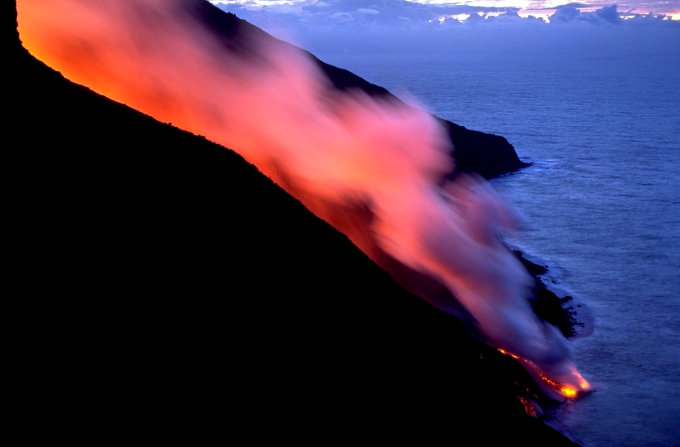 1. Jan. 2003, 18h. f=50mm from Filo del Fuoco. The lava flow exits from the canyon excavated by the landslide of 30. Dec 2002. | 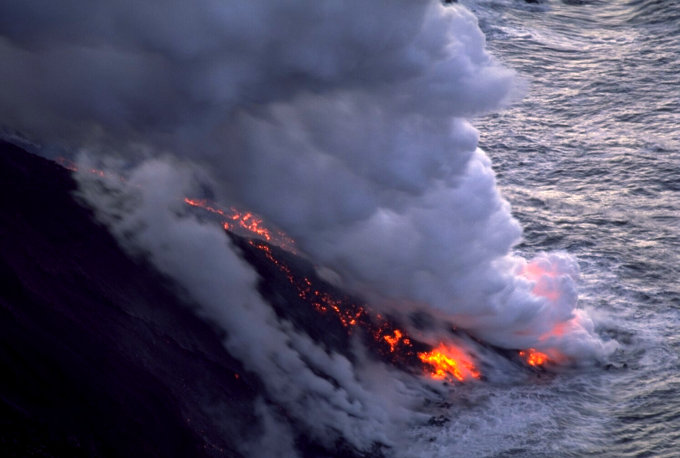 1. Jan. 17h. f=300mm from Filo del Fuoco. The dense steam from vaporized sea water is illuminated by incandescent lava. | 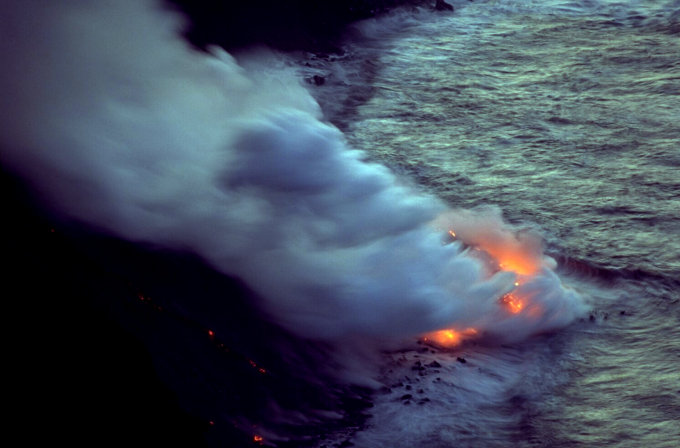 1. Jan. 17h. f=300mm from Filo del Fuoco. Already cooled lava "teeth" appear on the right of the steam column which partially hides the new lava delta. | 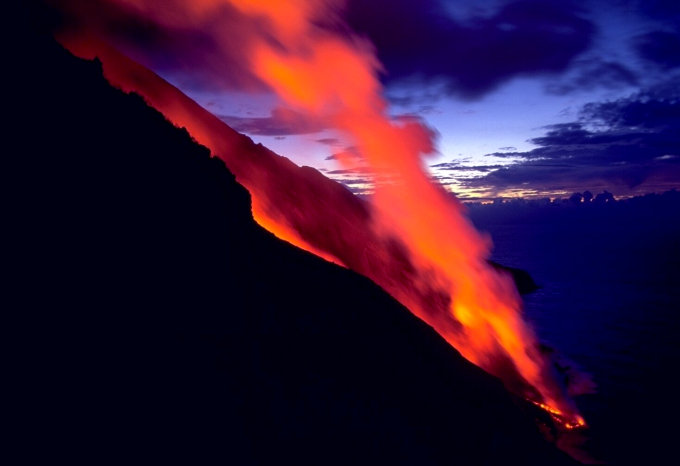 1. Jan. 18h, f=28mm. As the wind decreases, the steam column moves in such a way as to allow us to see the canyon wall which is illuminated by the red lava. |
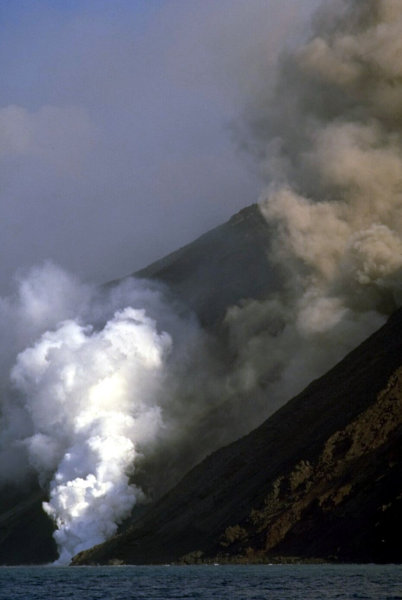 31. Dec. 2002, 13h. f=135mm from a boat of the Capitaneria di Porto bringing us to Stromboli. White steam from the active delta is on the left and yellow ash from huge landslides in Sciara del Fuoco on the right. | 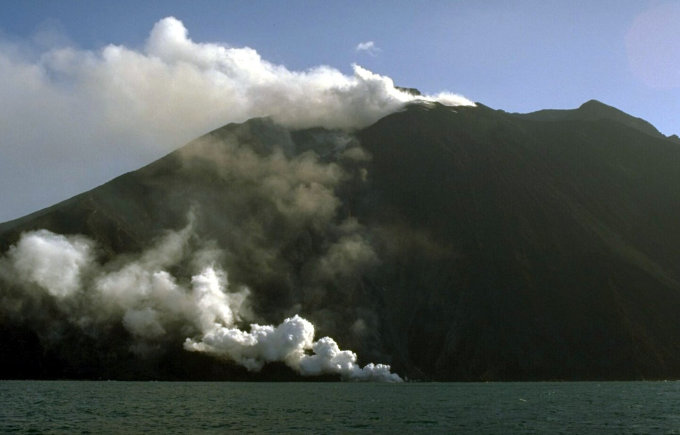 31. Dec. 13h. f=50mm from the sea below Sciara del Fuoco. The summit craters are strongly degassing without any explosive activity. The red lava flow in the middle of Sciara del Fuoco, is hidden by ash from landslides. | 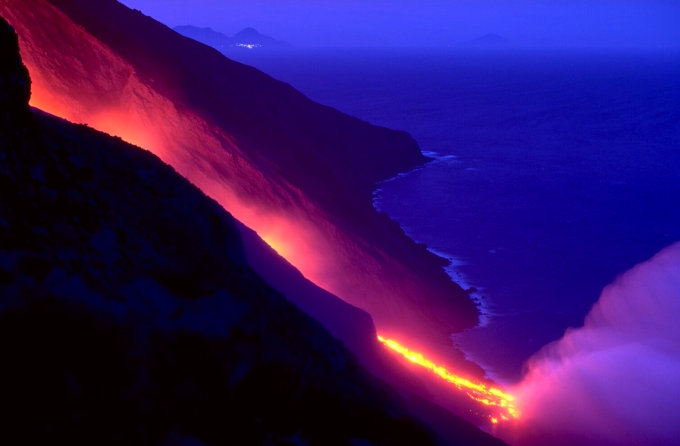 3. Jan. 2003, 6h. f=50mm from Filo del Fuoco. A strong "Libeccio" wind pushes all steam down onto the sea, giving us a perfect view of the canyon walls reddened by lava. Salina (left) and Filicudi (right) are in the background. | 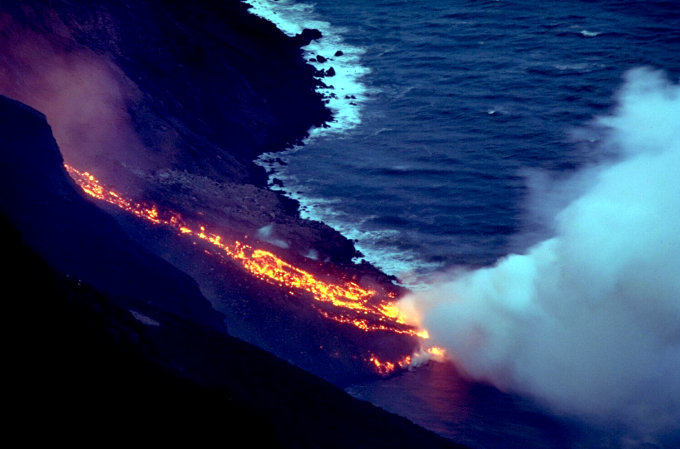 3. Jan. 6h, f=135mm from Filo del Fuoco. A clear view of the lava flow leaving the canyon and entering the sea. The active delta vaporizes sea water causing a dense steam column. |
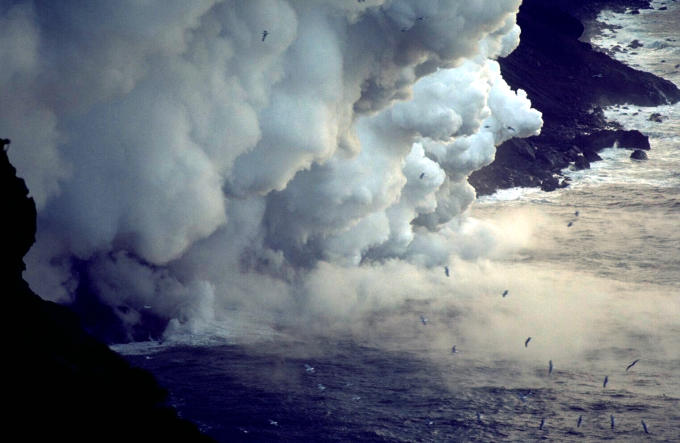 4. Jan. 2003, 16h. f=300mm from Punta Labronzo. Hundreds of sea gulls are attracted by the heat of the active delta. | 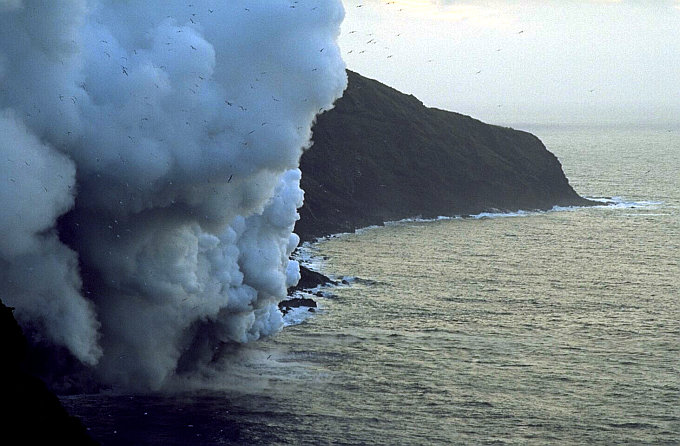 4. Jan. 16h. f=135mm from Punta Labronzo. The sea water boils on the far right of the active delta below the sea gulls. | 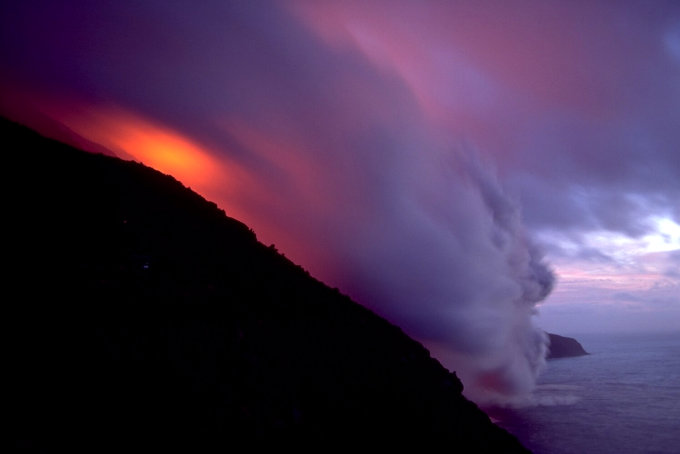 4. Jan. 17h. f=28mm from Punta Labronzo. Wet weather makes the billowing red steam column appear very dramatic. | 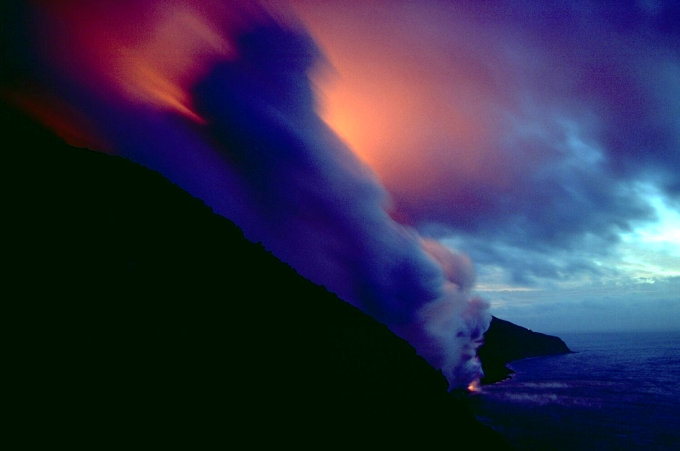 4. Jan. 17h. f=28mm. The whole path leading up along Filo del Fuoco (left) towards the summit is covered by steam. |
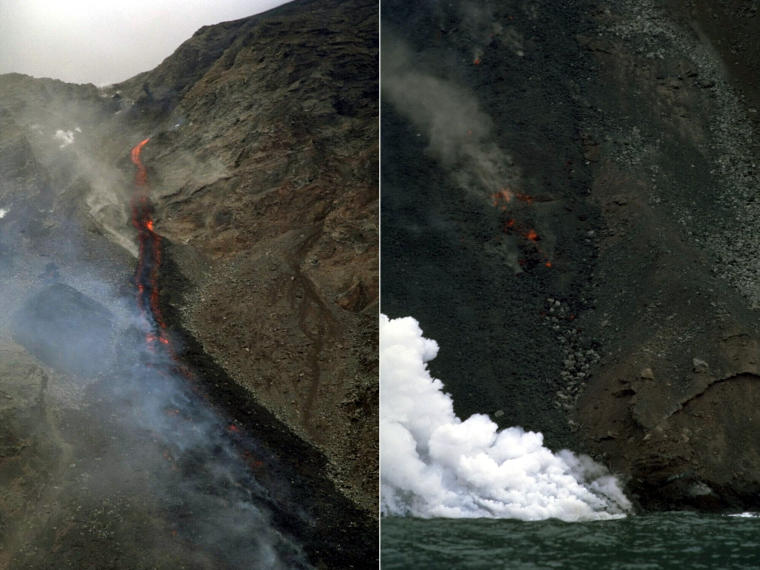 6. Jan. 11h. f=135mm from the sea below Sciara del Fuoco. The active vent feeds a lava flow. Despite daylight it appears red. It enters the sea (right) together with small landslides. | 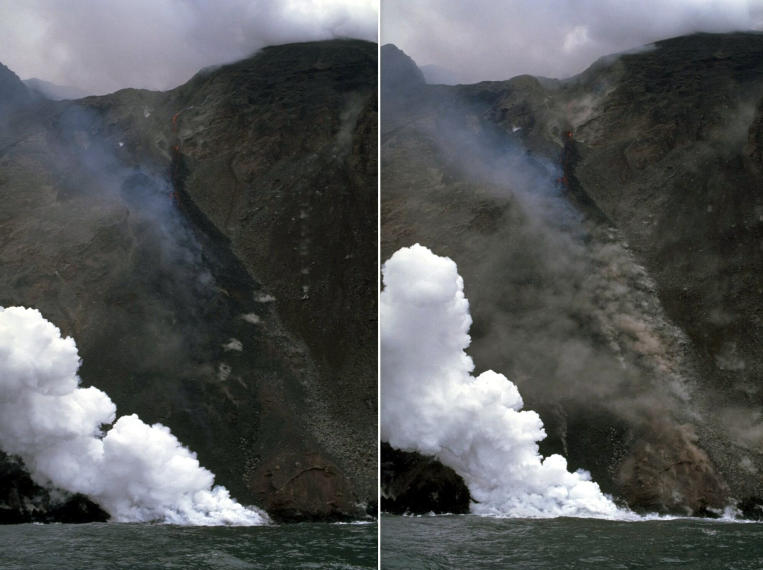 6. Jan. 11h. f=50mm from the sea below Sciara. Overview of the lava flow from its vent at 500m.a.s.l. down to the sea. Small rockfalls (left) trigger bigger landslides (right). | 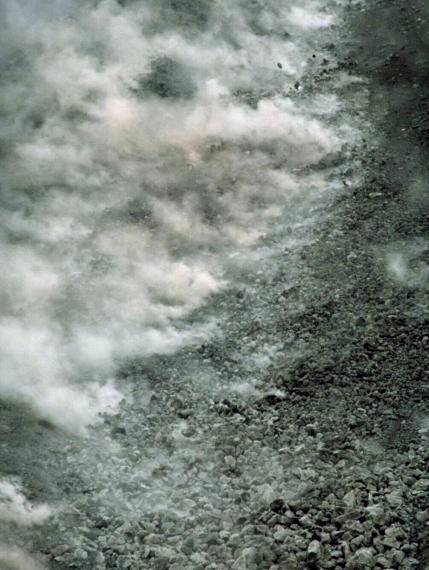 6. Jan. 11h. f=135mm from the sea below Sciara. Zoom on an active landslide, showing meter-sized boulders tumbling down Sciara del Fuoco before crashing into the water. | 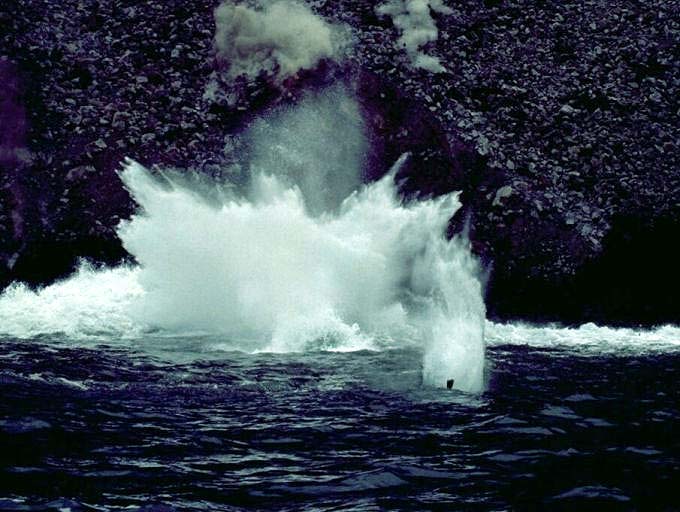 6. Jan. 11h. f=50mm from the sea below Sciara. Car-size boulders splash into the sea producing spectacular fountains. One is just on contact with the water surface (right). |
| Copyright: M. Fulle. |